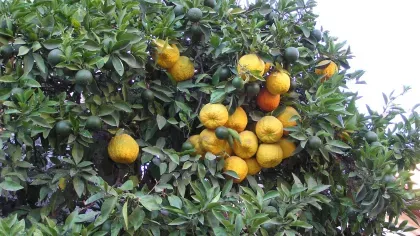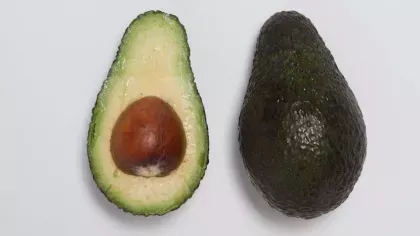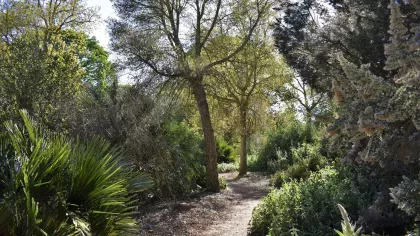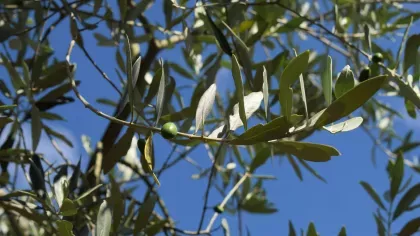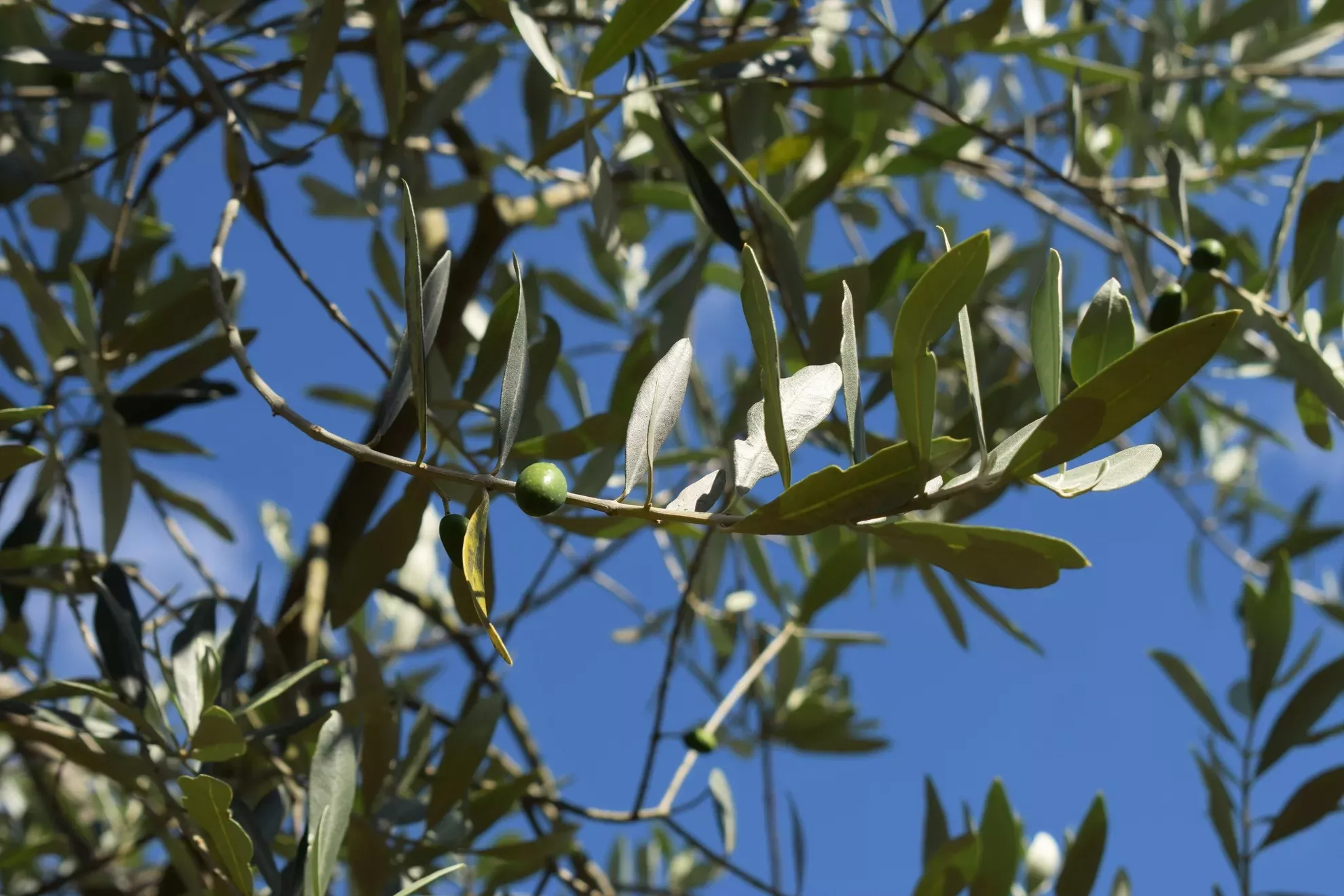
Olive
On this page
The gnarled trunks and silvery, evergreen leaves of the olive tree have shaped the sun-kissed landscape of the Mediterranean for thousands of years.
Olive plants have long been symbols for peace, wealth, power, and success. In ancient Greece, their leafy branches were used to crown victors of Olympic games.
Kew’s Herbarium contains a wreath of olive leaves that is over 3000 years old and was from the tomb of King Tutankhamun.
Plant description
Evergreen shrub or tree with a short, twisted trunk and narrow, leathery leaves. The small, whitish flowers grow in clusters and the egg-shaped fruit consist of a hard stone surrounded by an edible flesh.
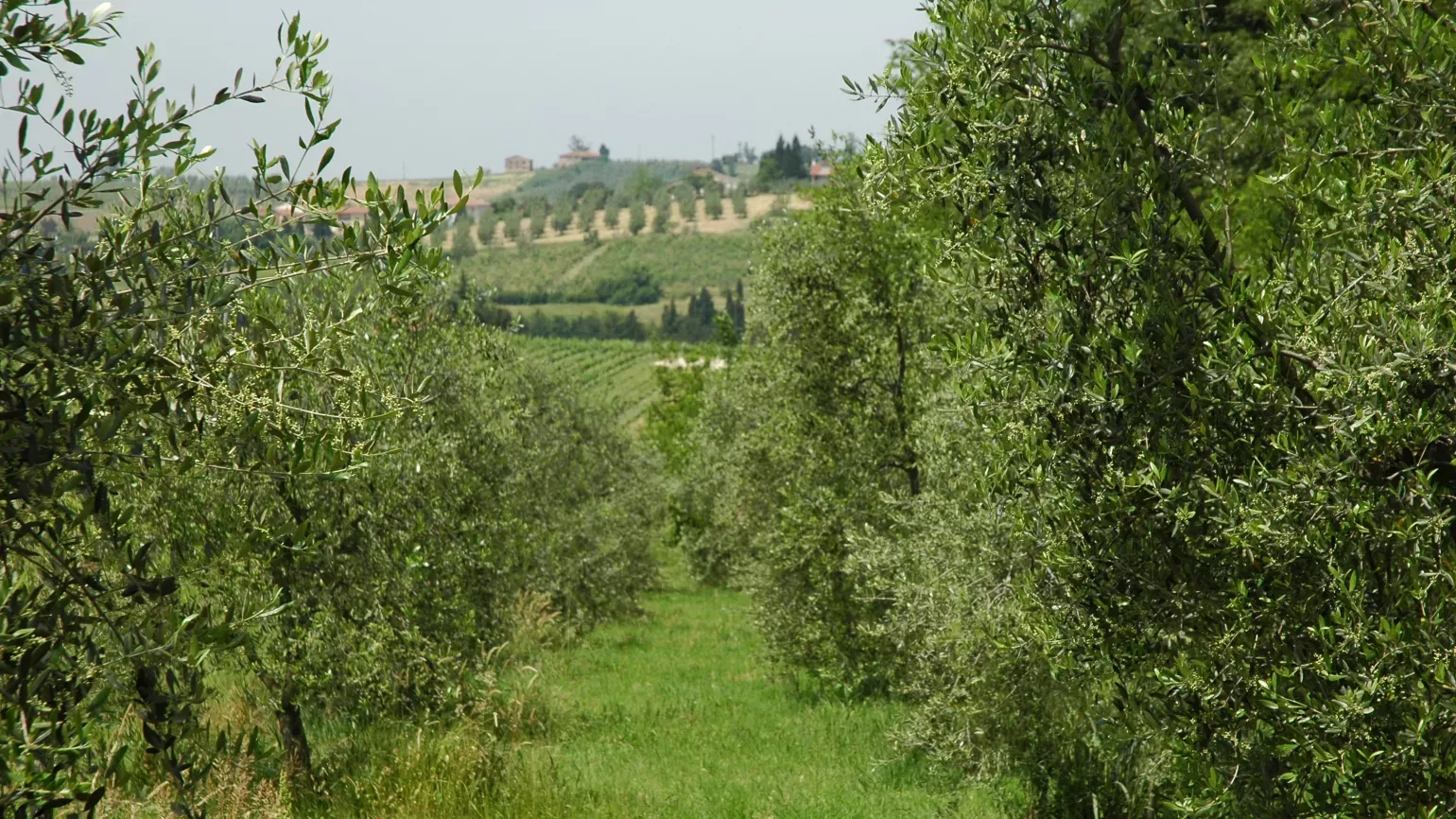

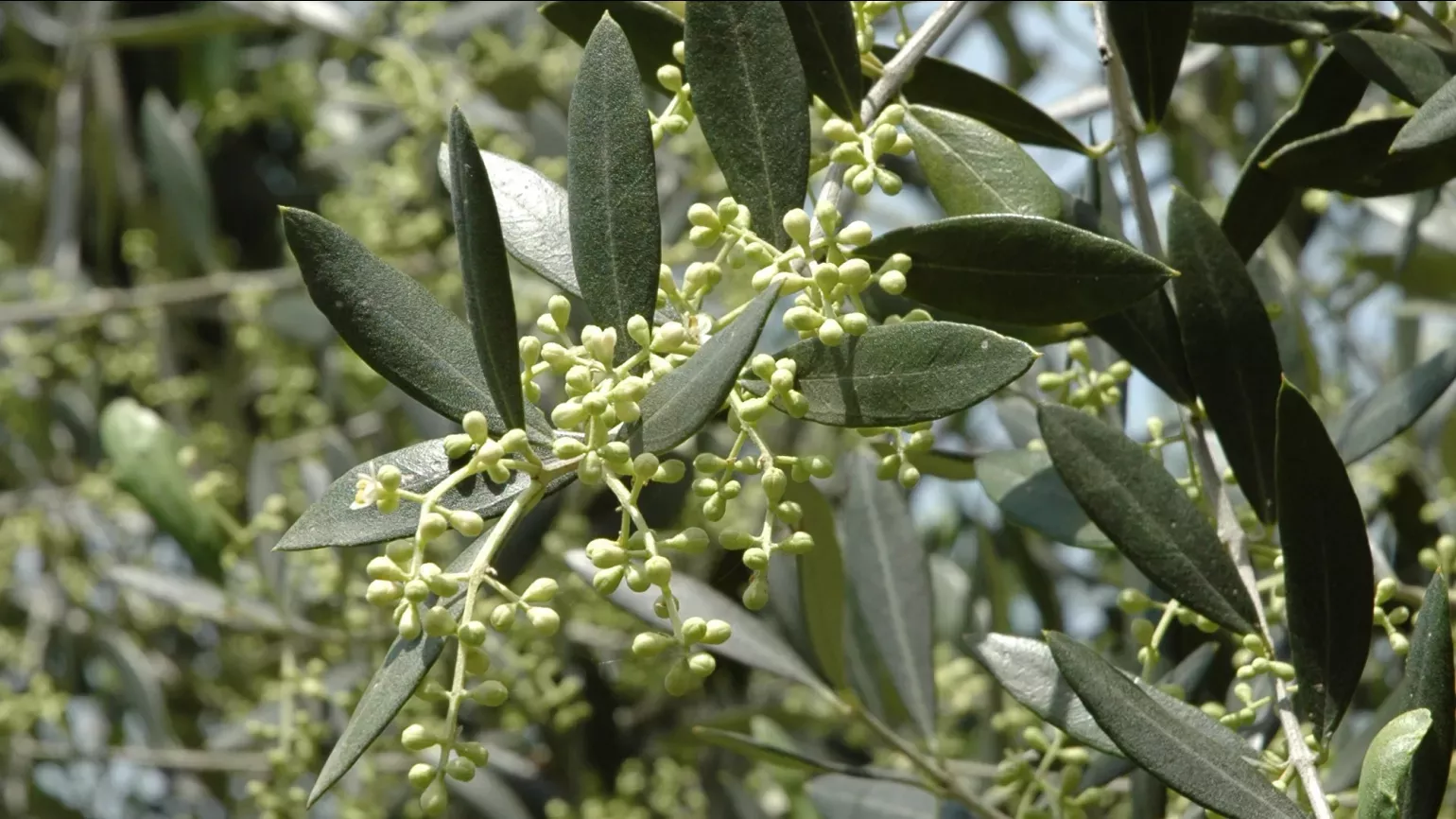

Plant uses
Cultural
Olive trees have been growing in the Mediterranean for thousands of years. They have adapted to be drought-resistant so they can survive in the dry climate.
These beautiful trees have shaped both the landscape and culture of the region. They are grown for their ornamental features: twisted trunks and silvery, evergreen leaves.
The olive tree has a wealth of symbolism. Olive branches represent peace; in the bible a dove returns to Noah in the Arc with a fresh olive branch in its beak to mark a return of life to earth and the end of the great flood.
The ancient Greeks saw olives as a symbol of strength and victory. Leafy olive branches were made into a wreath and used to crown victors of Olympic games.
Food and drink
Revered worldwide for its distinctive flavour, olive oil is the most popular olive product and is widely used in cooking.
Olive fruit are often eaten as snacks or starters and are a key ingredient in Mediterranean cooking.
Health
Due to the fatty acid composition and presence of certain compounds (phenols) in olive oil, it may help prevent damage to cells caused by oxygen, widen blood vessels, reduce the risk of blood clots and have anti-inflammatory properties.
This could mean an overall healthy diet that is rich in olive oil could reduce the risk of cardiovascular disease, high cholesterol levels and high blood pressure.
Materials and fuels
Olive wood is sometimes used for fine furniture and sculptures. The wood, as well as the stones, are also used for fuel.
Did you know?
Some of the olive trees in Kew’s Mediterranean Garden are over 100 years old.
Olive fruit are harvested into nets at the base of the tree by shaking the branches or waiting for them to fall naturally. They are soaked in water and then cured with salt or fermented to make them palatable.
Olive oil comes from the fruit of the olive tree. Once collected, the fruit are cleaned, crushed into a paste, and pressed to extract the oil from the pulp.
The colour of the olive fruit depends on how ripe it was when it was picked and preserved. Green olives are picked when unripe, while black olives are picked when fully ripe.
Olive oil is classified based on whether it is unrefined (pure and untreated) or refined (treated using heat or by dissolving into a solution to remove flaws). Virgin olive oils are obtained by only pressing the fruit to obtain the juice with no further refining or processing.
Where in the world?
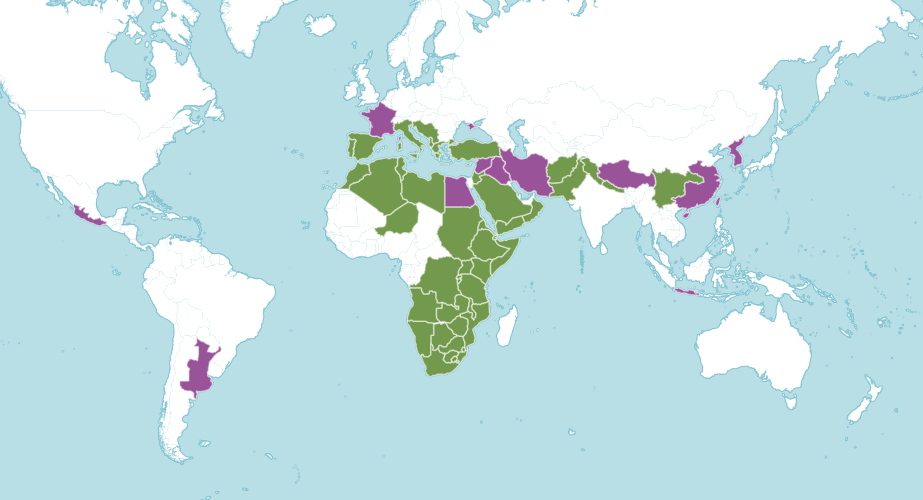
Seasonally dry Mediterranean shrubland. Grows well in sandy, free-draining soil on dry slopes and in rocky areas.
Find it in our gardens
Kew Gardens
A botanic garden in southwest London with the world’s most diverse living plant collection.
Location
View map of Kew GardensBest time to see
Our work
Kew horticulturalists grow olive plants behind the scenes in the Arboretum Nursery.
Seeds are sown in an open, gritty, free-draining compost. It takes from a few weeks to a few months for a plant to begin to grow from seed.
The young plants are then put into special containers called air-pots which encourage the roots to grow down and prevent the plants from becoming pot-bound (roots fill the pot, leaving no room to grow).
The seedlings are kept at a minimum temperature of 5˚C. Only natural light is provided, and they are well watered.
The mature plants are later planted in the gardens straight from the air-pot.
